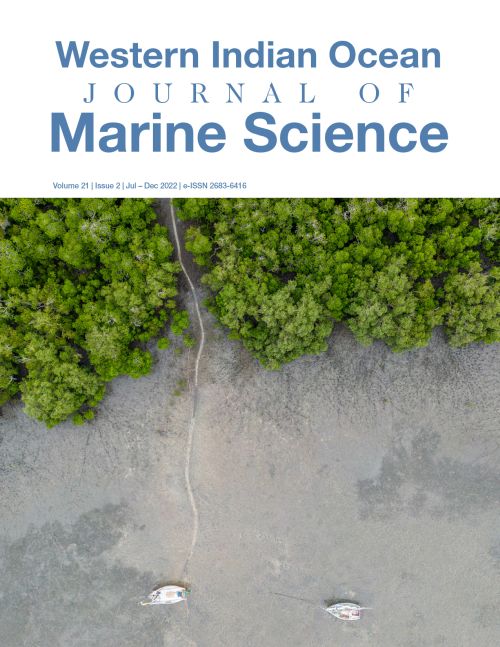Main Article Content
Artificial reef structures and coral transplantation as potential tools for enhancing locally-managed inshore reefs: a case study from Wasini Island, Kenya
Abstract
Many severely degraded reefs in the western Indian Ocean region show no signs of natural recovery and have remained for decades as barren, unconsolidated coral rubble fields with depleted commercially important fish groups. Consequently, several restoration techniques have been designed and developed to mitigate the localized impacts on coral reefs. Evaluating the efficacy of combined use of artificial reef structures and coral transplantation in enhancing habitat and recovery of key functions in severely degraded reefs is key to improved conservation of coral reefs. In this study, the survivorship rate of corals transplanted on reef structures is assessed, and changes in coral and fish abundance on artificial reef units and nearby natural reefs over time are compared. Coral cover on artificial reef structures increased from a mean of 17 % one year after initial attachment of fragments to 41 % after two years, with Acropora corals providing the highest cover. The artificial reef structures were also rapidly colonized by reef fish, with fish densities of 18±13 indiv./100 m2 showing an increase of about three fold higher than on natural reefs after two years. Greater numbers of commercially important fish groups (e.g., Lutjanids and Acanthurids) were observed on artificial reefs while natural reefs harboured more small sized fish (Pomacentrids and Labrids). These findings provide insights for artificial reef projects that are capable of restoring the regenerative capacity of the human-induced coral rubble beds.






